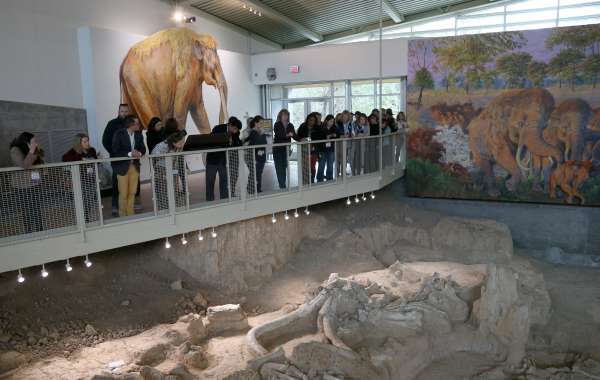Texas may have become a state in 1845, but the land has been around a lot longer—approximately 600 million years. Time travel along the Prehistoric Texas Trail to learn more about the first inhabitants in Texas.
Long before humans, dinosaurs roamed Texas. There are many sites you can visit throughout the state to see some of the most well preserved tracks and fossils in the entire country. Take a step back in time and start your prehistoric adventure today.
Dinosaur Valley State Park
Glen Rose, a small town just south of Fort Worth, is the “Dinosaur Capital of Texas.” 113 million years ago, hundreds of dinosaurs used the nearby Paluxy Riverbed as a pedestrian highway. Their footprints were captured in thick mud that hardened over time, leaving an abundance of tracks and trails that still are visible today when you visit the Dinosaur Valley State Park.
There are five main sites within Dinosaur Valley State Park where visitors can see two types of visible tracks. The first is named Sauropod, which are large elephant-like tracks believed to have been made by Sauroposeidon proteles. The second, Theropod, has smaller tracks which show a distinct three-toed pattern, believed to have been made by Acrocanthosaurus. Visitors can locate tracks using a map on the park’s website, with Sauropod footprints marked in blue and Theropod tracks in red.
In addition to finding dinosaur tracks, visitors to the park can camp, picnic, hike or mountain bike along the more than 20 miles of trails. Swim and fish in the river, watch for wildlife, look for a geocache or ride horses, all at Dinosaur Valley State Park.
Waco Mammoth National Monument
Waco, Texas is home to the Waco Mammoth National Monument, which was recently designated as one of three new national monuments. The site is located on 100 acres of beautifully wooded countryside, including a dig shelter which overlooks an actual dig site. From a bridge above, visitors can view the remains of several mammoths still half-encased in the ground.
The mammoth skull and tusks are astonishing in size, and imagining a herd of these animals roaming the grounds brings history to life. The bones of the first mammoth unearthed at this location were discovered in 1978, and bones are displayed as they were found, in the now dry pond sediments for an “in-situ” exhibit. To date, 61 mammoths have been identified, including the nation’s first and only discovery of a nursery herd. Other remains excavated include a giant short-faced bear, camel, llama, prairie dog, wolf, fish and numerous other plant and invertebrate fossils. So be sure to add this gem to your Waco itinerary.
The Gault Site
In the town of Belton, the Bell County Museum houses the Gault Site, one of the largest excavated sites of the Clovis people, who are thought to have occupied the region 13,500 years ago.
At the museum, large murals show what the Clovis communities may have looked like, and a film titled The Gault Project: An Adventure in Time provides an understanding of the size and significance of the excavation itself. Just a short half-hour drive southeast lies the actual excavation site. The Texas State Archeological Landmark has yielded more than two million artifacts, including examples of the oldest known architecture in North America.
Take your own trip back in time to explore prehistoric Texas and learn about the early beginnings in Texas. While those early Texans may be gone, evidence of their existence lives on for visitors to explore.















